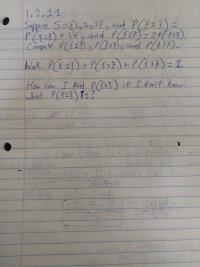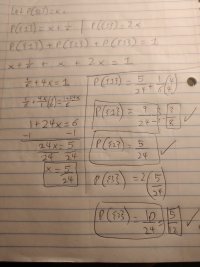nicholaskong100
New member
- Joined
- Aug 1, 2021
- Messages
- 33

Thought process: I know the sample space is 1. And I know I need to find the probability of the 2nd element because it shared among the probability of the 1st element and the 3rd element.
Most of the earlier problems I did gave a known value which made it easier to solve.
But how can I find the probability of the 2nd element IF I don't know what the probability of the 1st element or the 3rd element is?

